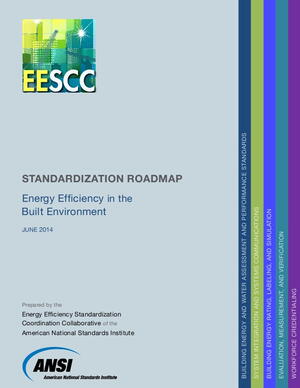
This roadmap establishes a framework to which U.S. industry, government, standards developing organizations (SDOs), and other stakeholders can look to enable greater energy efficiency capabilities for the nation’s buildings. In the following chapters, the roadmap examines five inter-related yet distinct topics identified as areas where standardization could significantly impact deployment of energy efficiency in the built environment. The roadmap identifies standards, codes, and conformity assessment programs that are available or under development, gaps that exist, and additional standardization activities needed to advance energy efficiency in the United States. In total, the roadmap details 125 recommendations and timelines for action, as appropriate: ? Chapter One: Building Energy and Water Assessment and Performance Standards outlines 46 recommendations to address identified standardization gaps in these areas ? Chapter Two: System Integration and Systems Communications details 9 recommendations examining how building sub-systems could be integrated in order to manage the energy use of a building or campus of buildings for maximum efficiency ? Chapter Three: Building Energy Rating, Labeling, and Simulation outlines 22 recommendations to address identified standardization gaps ? Chapter Four: Evaluation, Measurement, and Verification (EM&V) details 32 recommendations to advance the field of EM&V ? Chapter Five: Workforce Credentialing puts forth 16 overarching recommendations to advance workforce credentialing for the energy efficiency field The roadmap’s recommendations for closing standardization gaps in the near-term (0-2 years), midterm (2-5 years), and long-term (5+ years) are intended to chart a strategic approach to energy efficiency standardization, and to assist SDOs in identifying priority areas for work, as well as opportunities for collaboration, coordination, and harmonization.
